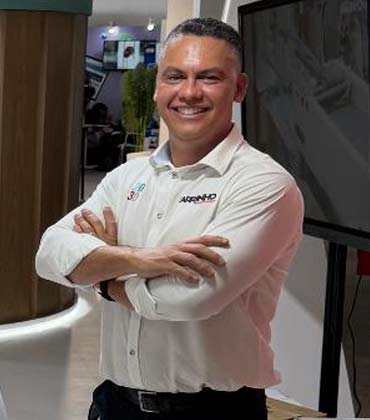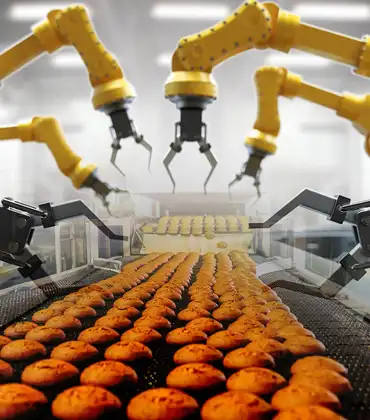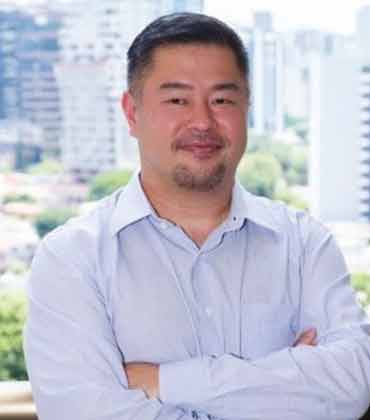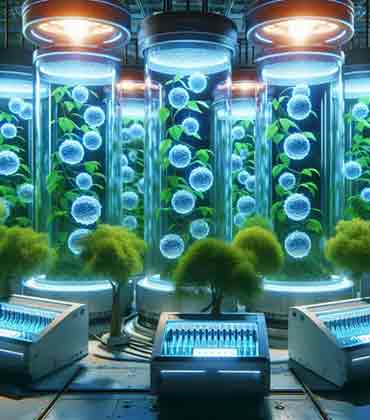THANK YOU FOR SUBSCRIBING
By Chef Jason Schwartz, Director of Safety and Risk Management, SFE
Southwest Foodservice Excellence SFE - Safe Serving in...

Leading Change with Risk, Structure and Measurement
Federico Alfredo Kladt Kladt, R&D&I Director, Liotécnica

 Federico Alfredo Kladt Kladt, R&D&I Director, Liotécnica
Federico Alfredo Kladt Kladt, R&D&I Director, LiotécnicaA chemical engineer with deep expertise in R&D and innovation, Federico Alfredo Kladt Kladt has led product development across food, cosmetics and beverages. He spent over a decade at Bunge in R&D and production, later returning as Innovation Manager. After earning his MBA in the U.S., he led at a fruit bar company and Natura, overseeing end-to-end product development. He later launched a consulting firm before joining Liotécnica, where he now leads R&D, Innovation and Regulatory Affairs.
In this interview, Kladt emphasizes separating R&D from innovation to balance reliable delivery with breakthrough creativity while fostering a culture that embraces measured risk and failure. He also highlights precision measurement and transparency as essential for sustainable leadership and consumer trust.
Leading Through Clarity, Not Conformity
The most substantial shifts I’ve seen in business don’t come from technology or trends. They come from clarity. Especially in innovation, where direction can blur easily, clarity creates momentum. Over the years, I’ve helped companies rethink their approach to growth, not by adding complexity but by drawing clear boundaries between structure and space.
One of the most effective steps is separating R&D from innovation. Many companies combine them, assuming they serve the same purpose. They don’t. R&D is about precision and timely execution. Innovation is exploratory by nature. The teams, mindset and resources for each must differ. Keeping them together slows both.
I’ve helped build structures that support this separation. Focused R&D teams deliver on tight timelines and refine existing products. Dedicated innovation teams explore new ideas, experiment and take calculated risks. They’re expected to try, fail and try again. That contrast in tempo is not a conflict and it’s the foundation of modern growth.
Risk, Failure and the Real Math of Innovation
One of the hardest ideas for leadership teams to accept is that failure in innovation is not a problem to fix. It is a signal of progress. I aim for a 60 percent success rate in successful R&D teams. For innovation teams, 30 percent is not only realistic, it’s healthy.
I remind my teams that we need ten serious ideas to get five to work. Even if only half make it to market, that’s valuable. Every abandoned project adds to our understanding. The worst thing we can do is ask innovation to behave like production, where failure carries cost and must be minimized. In innovation, avoiding failure usually means avoiding risk. And when risk is avoided, discovery stalls.
“Innovators are not machines. They’re more like artists. They work in cycles, trying, failing, adjusting and returning. If they’re treated like production units, they stop taking creative risks. That risk-aversion spreads and innovation slows to maintenance”
The healthiest cultures I’ve worked in treat incomplete projects as stepping stones. What didn’t launch still teaches and what wasn’t commercialized still informs. Progress isn’t always about output. Sometimes, it’s about learning what not to pursue.
Budgeting for Possibility, Not Predictability
Innovation needs freedom not just in mindset but also in funding. I’ve advised companies to maintain a separate innovation budget, around 0.5 percent of revenue, distinct from R&D. That budget should be entirely spent, not trimmed back after early failures. It must be treated as an investment in possibility.
When teams know their funding is safe, they stop building only what’s safe. They explore bold, future-shaping ideas. Even if not everyone hits the market, the few often reshape it.
Separating innovation budgets from R&D isn’t a financial decision. It’s a cultural one. It tells teams their work matters even when outcomes are uncertain.
Reformulation Begins with Relevance
What I’ve seen in food, beverage and cosmetics is that consumer trust is not just earned through results but through ingredients, language and emotional value. People are actively avoiding ultra-processed food and beverage options. They want what’s natural, honest and what they can recognize. Clean-label reformulation isn’t optional anymore. It’s expected.
I’ve helped companies shift without compromising taste, quality or compliance. Moving toward simpler, natural formulations builds credibility and, done right, strengthens loyalty.
In cosmetics, the expectation goes deeper. Consumers no longer buy only for function. They buy to feel confident, self-worth and control over daily care. Whether fragrance, skincare or haircare, the product must deliver results and emotional uplift. I work with teams to bring that experience to life through formulation, positioning and storytelling.
It’s no longer just about what’s inside the product. It’s about how it fits inside someone’s life.
Measuring What Matters, Managing What’s Measurable
The first question I ask isn’t about strategy. It’s about measurement. If an impact isn’t measured, it isn’t managed. Sustainability stays stuck in theory because companies can’t quantify their efforts. Once measurement begins, the direction becomes visible.
Clear data changes how teams act, whether it’s a carbon footprint, water usage or social contribution. It shifts sustainability from messaging to decision-making. At Natura, that clarity made it possible to turn good intentions into structured outcomes.
Too often, companies start with goals that sound good but lack metrics. I help teams move from abstraction to application, from setting targets to tracking progress. When people can see the effect of their work, they stay engaged. Measurement brings purpose down to earth.
There’s also a shift happening across industries. Environmental impact still matters, but social impact is gaining ground. Equity, inclusion and community are now part of the conversation and must be held to the same standard of rigor as carbon or packaging waste.
Sustainability without metrics is hope. With metrics, it becomes leadership.
Teams Don’t Need Perfection They Need Permission
The industries I work in change quickly. Consumer expectations shift and markets evolve. But many teams are still structured to deliver perfection, not progress. I believe R&D should be creative, less like a process and more like a studio. The best breakthroughs I’ve seen didn’t come from strict project plans. They came from the room to explore.
Innovators are not machines. They’re more like artists. They work in cycles, trying, failing, adjusting and returning. If they’re treated like production units, they stop taking creative risks. That risk-aversion spreads and innovation slows to maintenance.
What changes this is leadership that permits one to make mistakes, to try something unfinished and to think beyond the roadmap. I tell teams that we don’t need perfection at every stage; we need motion, input and curiosity. From that, the best ideas emerge.
The more companies design for flexibility over control, the more innovation feels possible, not occasional, but expected.
The Pattern Behind the Progress
Whether the challenge is product reformulation, team structure, creative leadership or ESG accountability, I’ve learned that the most resilient organizations separate what must be consistent from what must be free.
R&D and innovation are essential, but only when managed on their terms. Teams need clarity in roles, space to fail and funding that reflects belief in long-term value. Consumers want more than function. They want confidence, transparency and meaning. Companies need a measurement that turns values into action rather than mere intention.
What I bring is not a set of tools but a way to organize ambition. The path to relevance, growth and trust isn’t chaotic; it just needs to be structured for discovery.
Read Also















